안개로 팬들은 여름 더위, 특히 안뜰과 같은 야외 공간에서 인기가 높아지고 있습니다., 뒤뜰, 카페, 그리고 창고. 이 하이브리드 장치, 종종 물가와 팬이라고합니다, 공기 흐름을 증발 냉각과 결합하여 주변 온도를 낮추고 더운 날씨에 편안함을 향상시킵니다..
그러나 전기에 투자하기 전에 휴대용 미생물 팬, 그들이 어떻게 작동하는지 이해하는 것이 중요합니다, 그들이 가장 효과적인 곳, 사용 가능한 유형, 그리고 그들이 가질 수있는 한계. 이 안내서는 올바른 구매를 위해 알아야 할 모든 것을 다룹니다..
안개로 팬은 어떻게 작동합니까??

증발 냉각의 기술을 이해합니다
- 물 안개 + 공기 이동
연무 팬이 공중에 물방울 방울을 스프레이합니다.. 이 액 적은 Hot와 접촉 할 때 빨리 증발합니다., 건조한 공기, 환경에서 열을 당기십시오.
- 빠른 온도 감소
최적의 조건에서 (낮은 습도), 연무 팬은 10-15 ° C만큼 주변 온도를 줄일 수 있습니다. (50–59 ° F), 기후에 이상적입니다.
- 다른 압력 시스템
일부 팬은 고압으로 작동합니다 (적은 습기로 미세한 안개를 생성합니다), 다른 사람들은 저압으로 실행됩니다 (비용이 덜 들었다, 그러나 표면이 축축해질 수 있습니다).
- 증발 효율
이 기술의 효과는 건조한 조건에 달려 있습니다. 습한 지역에서, 증발이 느립니다, 냉각 효과가 크게 감소됩니다.
- 순환 문제
팬은 더 넓은 지역에 시원한 안개를 분산시킵니다., 전통적인 에어컨 또는 스탠드 팬에 비해 더 넓은 커버리지를 제공합니다..
안개 팬의 유형
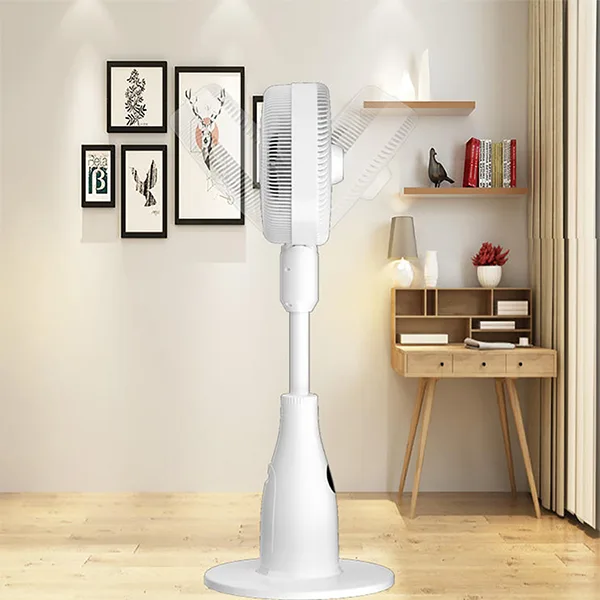
구매하기 전에 옵션을 알고 있습니다
- 전기 미생물 팬 (독립형)
이 장치에는 전기로 구동되는 워터 탱크 및 팬 시스템이 내장되어 있습니다.. 휴대용이며 사용하기 쉽습니다, 홈 파티오 또는 발코니에 이상적입니다.
- 벽에 장착 된 미더 팬
레스토랑이나 상점과 같은 고정 야외 설치에 적합합니다. 그들은 우주 절약하고 대상 지역에 대한 꾸준한 냉각을 제공합니다..
- 고압 미생물 팬
펌프를 사용하여 최소한의 젖음으로 매우 미세한 안개를 생성합니다.. 더 비싸지 만 전문적인 또는 상업용 사용에 탁월합니다.
- 저압 미생물 팬
표준 수압에 의존합니다, 더 예산 친화적입니다, 그러나 주변 환경이 습식 될 수 있습니다.
- 물 미스터가있는 배터리 또는 태양열 팬
친환경적이고 휴대용. 캠핑에 가장 적합합니다, 피크닉, 또는 제한된 전원이있는 원격 사용.
Difference Between a Misting Fan and a Misting System

| 특징 | 미생물 팬 | 미생물 시스템 |
|---|---|---|
| 설계 | Portable unit with built-in spray misters | Network of tubing/pipes connected to a high-pressure pump |
| 냉각 방법 | Blows air through water droplets, creating a fine mist | Disperses water through tiny nozzles for an ultra-fine mist |
| Coverage Area | Best for small spaces or personal cooling | Ideal for larger outdoor areas like patios, pool decks, or backyards |
| 이식성 | Highly portable; can be moved wherever needed | Fixed installation; designed for permanent or semi-permanent outdoor cooling |
| Best For | People who want mobility and spot cooling | Homeowners or businesses needing wide-area cooling solutions |
Misting Fans
- Portable units equipped with built-in spray nozzles.
- Push air through fine water droplets to create a cooling mist.
- Best for small areas, 안뜰, or personal use.
- Easy to move, making them a flexible solution for temporary cooling.
- A misting fan China supplier can offer cost-effective options for businesses and households.
Misting Systems
- Use tubing or pipes connected to high-pressure pumps.
- Disperse ultra-fine mist evenly across larger spaces.
- Ideal for outdoor areas like pool decks, 정원, and backyard spaces.
- Typically installed permanently or semi-permanently for continuous coverage.
How to Choose
Pick a misting fan if you want mobility, flexibility, and cooling for smaller spaces.
Go with a misting system if you need widespread, long-term cooling for large outdoor areas.
미스트 팬의 장단점
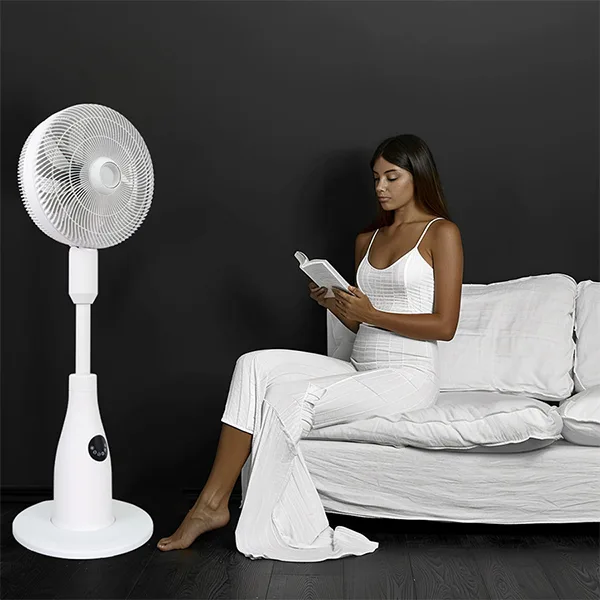
단점에 대한 이점을 평가합니다
✅ 전문가
- 효과적인 야외 냉각
미생물 팬은 안뜰에 탁월합니다, 정원, 창고, 그리고 이벤트. 그들은 마른 기후에서 넓은 공간을 빨리 식 힙니다.
- 에너지 효율성
에어컨에 비해, 안개로 팬은 훨씬 적은 전기를 소비합니다, 보다 지속 가능한 냉각 옵션으로 만듭니다.
- 이식성과 편의성
많은 모델에는 바퀴가 있습니다, 조절 가능한 헤드, 분리 가능한 탱크, 큰 유연성을 제공합니다.
- 이중 사용 기능
미생물 기능을 끄고 팬을 혼자 사용할 수 있습니다., 다양한 기상 조건에 적응할 수 있습니다.
❌ 단점
- 제한된 효과 습한 기후
습도가 높은 곳에서, 증발 과정이 느려집니다, 냉각 성능이 떨어집니다.
- 젖은 표면과 미끄러운 바닥
조심스럽게 사용하지 않는 경우, 특히 저압 모델에서, 물 축적은 젖은 바닥과 미끄러운 조건을 유발할 수 있습니다.
- 유지 보수가 필요합니다
경수의 미네랄 축적으로 인해 노즐 막힘을 피하기 위해 정기적 인 청소가 필요합니다..
- 실내 사용 제한
곰팡이와 같은 수분 위험으로 인해 대부분의 안아 팬은 실내 사용에 적합하지 않습니다., 곰팡이, 또는 전자 제품 손상.
미생물 팬을 어디에 사용 해야하는지
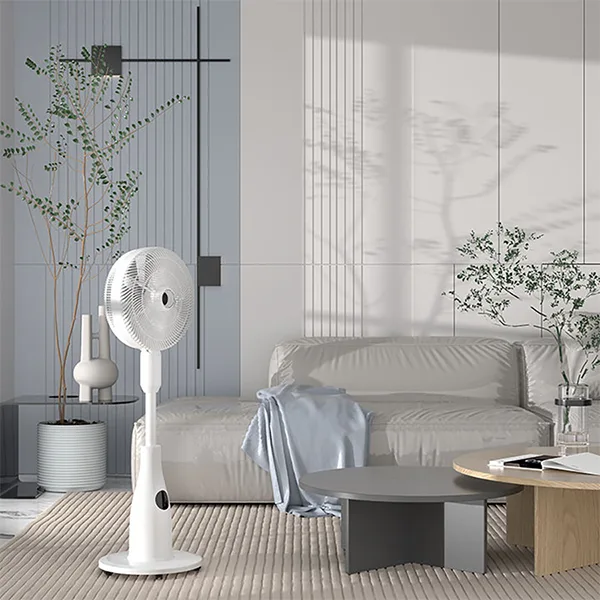
다양한 환경에 이상적인 응용 프로그램
- 야외 파티오와 정원
가족 모임을 식히기에 적합합니다, 바베큐, 또는 뒷마당의 저녁 휴식.
- 상업용 테라스와 카페
많은 기업들이 여름철에 벽 마운트 미스트 팬을 사용하여 고객 편의를 제공합니다..
- 스포츠 시설과 체육관
선수와 관중을 개방형 또는 반 밀집된 스포츠 경기장에서 시원하게 유지하는 데 유용합니다..
- 창고 및 워크샵
산업용 모델은 기존 AC가 가능하지 않은 대형 작업 공간을 식힐 수 있습니다..
- 이벤트 공간과 콘서트
고압 전기 연해 팬을 임시로 설치하면 군중이 편안하게 유지되고 열 관련 위험을 줄입니다..
에어 쿨러 대 미스트 팬: 더 낫습니다?
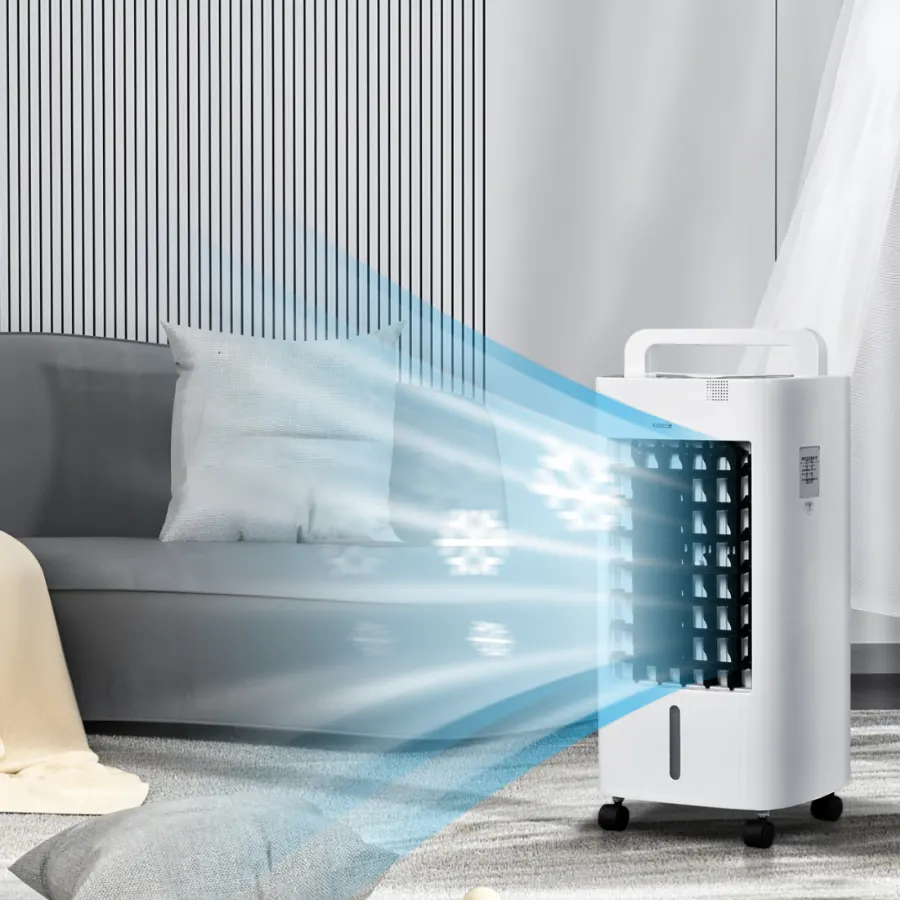
두 가지 인기있는 증발 냉각 옵션을 비교합니다
💧 미생물 팬
- 이상적입니다: 공기 흐름이 좋은 야외 공간.
- 냉각 방법: 환경을 식히기 위해 증발하는 공기로 안개를 뿌린다.
- 수분 조절: 압력 수준에 따라 표면 축축함을 유발할 수 있습니다.
- 소음 수준: 공기 냉각기보다 일반적으로 조용합니다.
🌬️ 공기 냉각기
- 이상적입니다: AC를 사용할 수없는 실내 또는 밀폐 된 환경.
- 냉각 방법: 물 포화 패드를 통해 공기를 당겨 식히고 가습합니다..
- 유지: 정기적 인 패드 변경과 물 탱크 청소가 필요합니다.
- 냉각 파워: 더 큰 실내 공간에서 더 효과적입니다, 특히 문이 닫힐 때.
평결
야외 파티오를위한 전기 미생물 팬을 선택하십시오, 이벤트, 또는 워크샵. 젖음을 증가시키지 않고 방 내부 냉각이 필요하면 공기 냉각기로 가십시오..
이카 소개
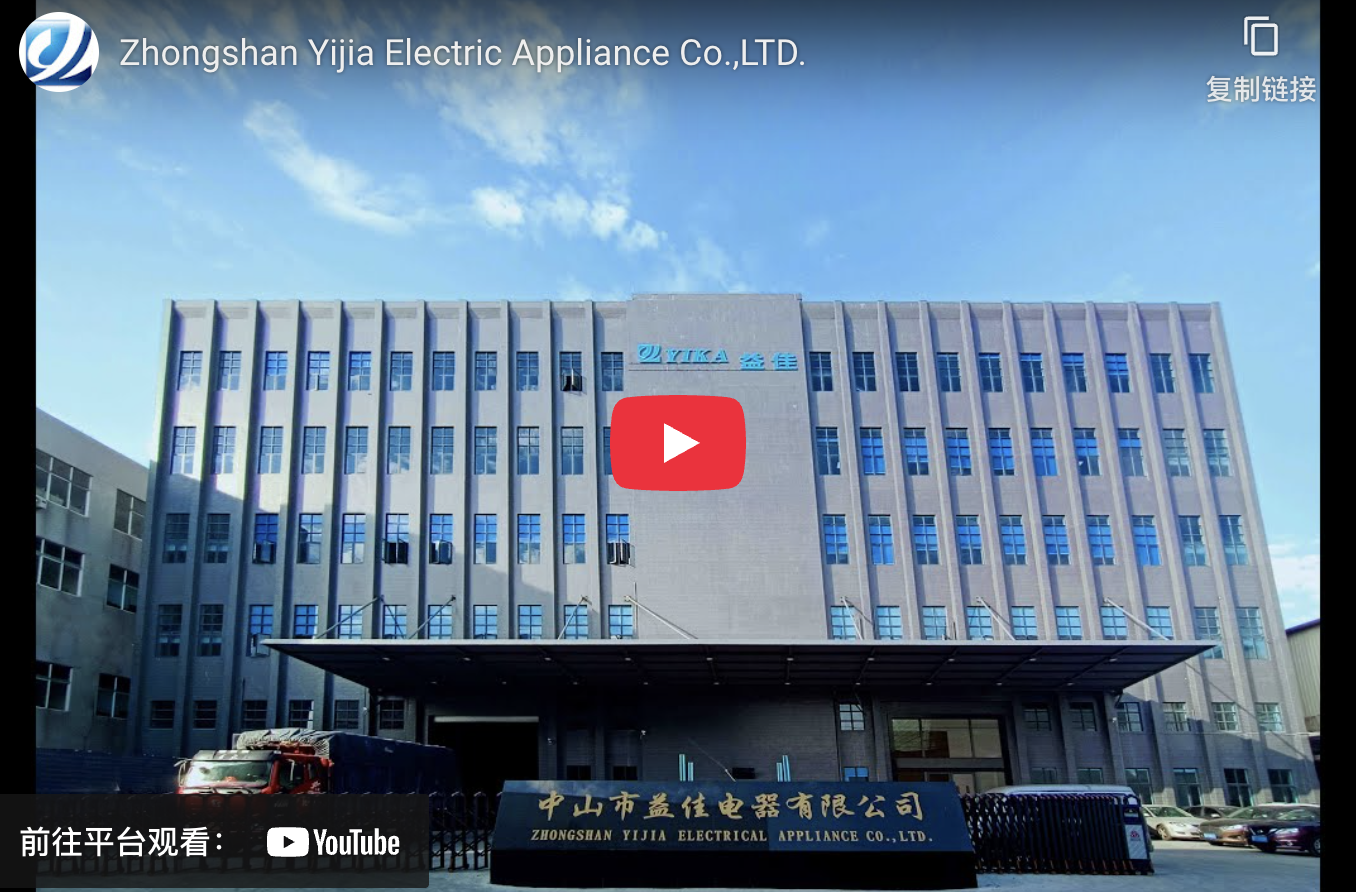
와 함께 14+ 수년간의 개발, 우리의 제품 범위는 포함하도록 확장되었습니다 전기 히터, 팬 히터, 전기 벽난로, 적외선 디젤 히터, 공기 쿨러 그리고 더. 우리는 주거, 광고, 그리고 산업의 클라이언트, 전문적인 제공, 환경 친화적인, 지능형 원스톱 난방 솔루션.
신뢰받는 전기히터 제조사로, Yika는 ISO45001에 대한 인증을 보유하고 있습니다, ISO9001, 및 ISO14001. 추가적으로, Yika는 Sedex에 의해 공급 업체 플러스 회원으로 인정되었습니다., 우리의 강력한 공급 능력을 보여줍니다.
그리고 Yika, 우리의 아르 자형&디 팀은 고객의 다양한 요구를 충족시키기 위해 혁신적이고 안정적인 난방 솔루션을 제공하기 위해 노력하고 있습니다..
결론
안개로 팬들은 강력합니다, 실외 냉각을위한 에너지 효율적인 솔루션. Whether you need a fan with a water mister for backyard BBQs or a commercial-grade electric misting fan for your café or warehouse, 미스트 팬 시스템의 장단점을 알면 올바른 모델을 선택하는 데 도움이됩니다.. Many businesses even pair cooling options like misting fans with indoor comfort solutions such as a wholesale electric fireplace, ensuring year-round climate control.
당신의 기후를 평가하십시오, 공간, 그리고 사용은 신중하게 필요합니다. 올바른 기능과 적절한 유지 보수, 연무 팬은 가장 뜨거운 날조차도 시원하고 편안하게 유지할 수 있습니다..
자주 묻는 질문
미스트 팬이 더 많은 전기를 소비합니까??
미아 팬은 에어컨에 비해 훨씬 적은 전력을 소비하고 에어컨 효율이 훨씬 높습니다.. 에이 250-300 와트 미드 크기의 안개 팬이 사용됩니다, 비교 1000-2000 전통적인 분할 AC가 소비 한 1 시간.
안개 팬은 건강에 좋은 것입니다?
연해 팬들은 재생 물 대신 담수를 사용하여 질병과 박테리아의 전염을 방지합니다.. 연해와 가습 팬은 주변 공기에서 먼지를 제거하고 먼지와 몬순 바람이 많은 지역에서 가장 잘 사용됩니다..
미생물 팬과 일반 팬의 차이점은 무엇입니까?
- 냉각 메커니즘
표준 팬은 단순히 공기를 순환시킵니다, 온도를 바꾸지 않고 바람을 제공합니다. 에이 미생물 팬 실제로 증발을 통해 공기 온도를 낮 춥니 다.
- 습도와 편안함
팬들은 공기에 수분을 더합니다, 야외에서 상쾌 할 수 있습니다. 일반 팬은 습도에 전혀 영향을 미치지 않습니다.
- 에너지 및 물 사용
미스트 팬은 물과 전기를 모두 사용합니다, 일반 팬은 전기 만 사용합니다. 하지만, 미아 팬은 에어컨보다 여전히 비용 효율적일 수 있습니다..
- 응용 프로그램 적합성
실외 또는 반 오픈 공간에서 미아 팬을 사용하십시오. 전통적인 팬은 실내 냉각에 더 적합합니다.
- 가격과 기능
미스트 노즐과 같은 추가 기능으로 인해 미생 팬은 일반적으로 기본 팬보다 비싸다., 탱크, 압력 펌프.





















